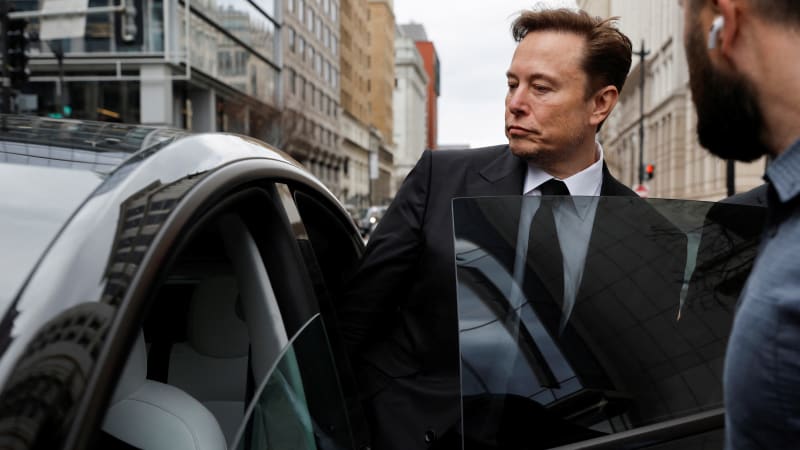Plan for a cheap Tesla is what fans hope to hear tomorrow at Investor Day

SAN FRANCISCO — Tesla Chief Executive Elon Musk has for years teased the world with his dream of an affordable electric car. Wednesday at Tesla Investor Day, fans hope he will explain what he has in mind — and perhaps how he can afford to build it.
Musk said last year he shelved the plan for a $25,000 car, known as Model 2, and he hasn’t mastered the new battery technology that he has stated would be crucial to the cheap cars.
Expanding into the mass market is critical to meeting Tesla’s goal to increase vehicle deliveries 15-fold — to 20 million — by 2030. Tesla cut prices in recent months to boost sales, which were pressured by a weak economy and growing competition.
Its shares are up about 60% year to date but are still at half their November 2021 peak.
The low-priced car is expected to be the centerpiece of Musk’s ‘Master Plan Part Three’, which he will offer at an ‘Investor Day’ on Wednesday, along with plans for factory expansion and capital spending.
Whatever he says about timelines, though, investors will be wary, since he has missed his most prominent deadlines while building the world’s most valuable car company.
“The formula for decoding Musk is pretty simple. Take whatever time frame he has, and multiply it by two,” said Gene Munster, Managing Partner at Deepwater Asset Management, which owns Tesla shares.
He expects the new car platform to be rolled out in 2025 at the earliest, which would still be years faster than the typical auto industry development of a new vehicle.
Tesla did not respond to Reuters’ request for comment.
It’s all about batteries
Clues offered by Musk about the Model 2 leave much to the imagination. Making a compelling $25,000 electric vehicle “has always been our dream from the beginning of the company,” he said at a presentation about batteries in 2020.
Last year, Musk announced a plan to roll out a robotaxi with no steering wheel or pedals by 2024, though it was not clear if it was the same inexpensive car.
A recent Tesla engineering video showed a small car with typical Tesla curves that was assumed by company watchers to be a Model 2 sketch.
Guidehouse Insights analyst Sam Abuelsamid said Tesla might announce a cheaper car with short driving range for the Chinese market, but a long-range, affordable car that would appeal in the U.S. market will probably take some time due to slow ramp up of its own batteries.
Musk said last year in a podcast about minerals, titled ‘Getting Stoned’, that the new master plan, building on earlier ones for vehicle launches and developing solar and energy storage businesses, is about how to “scale” and get all the materials needed to make batteries for vehicles and energy storage systems.
The fundamental determinant “of the rate at which we can transition to sustainability is the rate at which we can grow the output of lithium ion batteries,” he said in the interview.
Although there is some sign sky-high lithium prices may be easing, Musk has said lithium costs could force Tesla to make its own supply of the electric vehicle battery metal.
Battery production also is an issue.
Musk in 2020 forecast his company in 2022 would produce 100 gigawatts of newer generation, lower cost batteries, enough to power about 1.3 million Tesla Model Ys, but the December production rate of the batteries, called 4680s, was enough for just over 50,000 vehicles a year.
Musk has also said Tesla will continue to use battery suppliers to scale up fast. Tesla counts Panasonic, CATL, LG Energy Solution and BYD as cell suppliers.
Batteries are also likely to figure in Musk’s plans for a “fully sustainable energy future” outside the car.
He may also discuss solar power generation and battery energy storage – which he has said are two other pillars to a sustainable energy future.
Investors will look out for any hints of demand, plans to ramp up production of the Cybertruck, which Musk said will start volume production next year, and locations of new Tesla factories, with Mexico, Canada, Indonesia and South Korea all cited as potential candidates.



